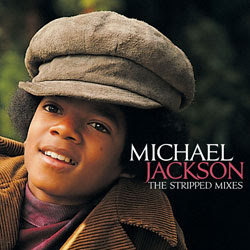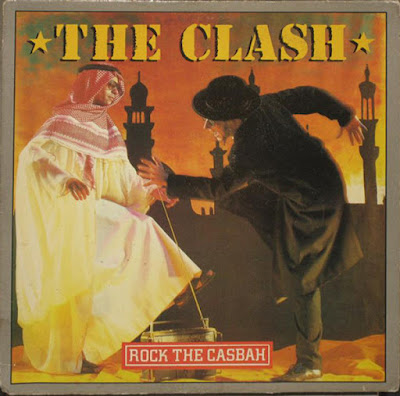“Brown Paper Bag” (1970) – Syndicate of Sound * Written by Steve Jenkins * 45: “Brown Paper Bag” / “Reverb Beat” * Producer: Garrie Thompson * Label: Buddah Records * Charts: Billboard #73
San Jose’s Syndicate of Sound had three US charting singles. The first two, the garage band classics “Little Girl” and “Rumors,” happened in 1966, while the third one, “Brown Paper Bag,” appeared in 1970. Newly signed to Neil Bogart’s Buddah label, which was at the tail end of its bugglegum experiment with hits by the 1910 Fruitgum Co. and Ohio Express, among others, the band in all likelihood aimed their record toward preteens. At the time of its release, though, the George Baker Selection was already on the radio with their “Little Green Bag,” hampering promotional efforts for “Brown Paper Bag.” Another publicity challenge: the otherwise loveable Creedence-tinged stomper focused overtly on the plight of a wino.
Author: Kim Simpson
“Shall We Dance” (1981) – Bram Tchaikovsky
“Shall We Dance” (1981) – Bram Tchaikovsky* Written by Bram Tchaikovsky * LP: Funland * 45: “Shall We Dance” / “Miracle Cure” * Producers: Nick Garvey and Bram Tchaikovsky * Label: Arista
Bram Tchaikovsky, from Lincolnshire, UK, was the stage name for Peter Bramall, formerly of the Motors. Because promotional images tended to show him standing as one of the blokes among his touring band, “Bram Tchaikovsky” was usually referred to as a group. (Joel Whitburn’s chart books still list the name this way, in the B section.) When Bram Tchaikovsky toured with Alice Cooper in 1980, then, the bill featured two groups that suffered from solo artist vs. band name confusion. (Alice had fixed the problem earlier by legally changing his name.) It was US touring that likely gave Tchaikovsky the stateside chart edge he didn’t enjoy back home. His 1979 “Girl of My Dreams” cracked the Top 40, while “Shall We Dance” — in spite of its potential for even broader early-eighties appeal, with its stuttering guitar, minimalist bursts of fluorescent keyboard, and promise of bliss via the dance floor — bubbled under at #109. Tchaikovsky, sadly, would resign from the music biz after this.
“Blue Denims” (1959) – Deviny James
Deviny James was an alias for Jim Pewter, who became better known by his given name as a DJ on KMET-LA and later Armed Forces Radio. “Blue Denims”—a title that may have aided in endearing him to Gene Vincent, for whom he later wrote a song called “The Story of the Rockers” (1969)—came out on the Beta label as the flipside to “Little Girl” in 1959. Check out the scorching guitar solo by session ace Larry Hulley and the disembodied backup voices on loan from the house on haunted hill. (Thanks to Jerry Richards for sending me a copy of this one.)
“Mustapha Dance” (1982) – The Clash
“Mustapha Dance” (1982) – The Clash * Written by the Clash * 12″ single: “Rock the Casbah” / “Mustapha Dance” * Produced by Mick Jones * Label: Epic
The odd musical singularity of the Clash’s “Rock the Casbah” seems to be one of those happy accidents. As drummer Topper Headon tells it, he had been tinkering around with a keyboard riff in the studio that ended up percolating throughout the hit recording. This was not the traditional Clash songwriting process, but the band had nonetheless ridden with it, after which Joe Strummer topped off Topper’s track with his own Middle Eastern word sauce. Their decision to give the mostly-instrumental dance version its own title invites the listener to approach it as a different entity and to take note of otherwise obscured wonders like Paul Simonon’s jounced-up bass line. A version by Paul Azzuba of a song called “Ya Mustapha” had perhaps gotten into Strummer’s lexicon when it reached #23 in early sixties Britain. Both sides of the “Rock the Casbah” 12-inch single credit Clash guitarist Mick Jones as the producer, while the Combat Rock LP says “mixed by Glyn Johns, made by the Clash.”
“Got to Be There (Stripped Mix)” (2009) – Michael Jackson

After Michael Jackson’s death in June 2009, State Farm ran a commercial featuring a new, understated mix of the Jackson 5’s “I’ll Be There” that focused on the voices and acoustic guitar. Demand prompted not only a new jingle single, but a full album of “stripped mixes” of early vintage Michael Jackson tracks. The collection’s jewel is “Got to Be There” because it rescues the 1971 #4 hit outright, scrapping the double-tracked vocal that made the shrill sharp IV in “beside me” such an uncomfortable listen. The lone vocal track now allows listeners to marvel in Michael’s delivery.
“The Messiah Will Come Again” (1972) – Roy Buchanan
“Red, Green, Yellow and Blue” (1968) – Dickey Lee
“Red, Green, Yellow and Blue” (1968) – Dickey Lee * Written by Dickey Lee * 45: “Red, Green, Yellow and Blue” / “Run Right Back” * String Arrangements by Charles Chalmers * Produced by Rivertown Productions * Label: Atco * Billboard: #107
Dickey Lee made out well during the early ’60s death rock craze. In the ’62 hit single “Patches,” one girlfriend ends up dead in the ditch, while in the following year’s “Laurie,” another one has passed on long before Dickey even meets her (it’s a musical version of the sweater-on-a-gravestone urban legend). By 1968 he was still dabbling in tragedy. “Red, Green, Yellow and Blue,” which just missed Billboard‘s Hot 100, captures a presumably Brylcreemed and becardiganed Dickey leaping frantically around town over the news that his girlfriend’s gone to San Francisco, land of colorful pills. “You’re halfway up your rainbow, girl, by now,” he yelps, while Charles Chalmers’ orchestration gives it all the moody atmosphere those earlier records only yearned for. (The record captures Chalmers’s string arranging career at an early stage. He’d go on to do arrangements with James Mitchell for all of Al Green’s albums from 1969 to 1973 and much more.)
“Da Ya Think I’m Sexy” (1978) – Rod Stewart
“Da Ya Think I’m Sexy” (1978) – Rod Stewart * Written by Rod Stewart and Carmine Appice * 45: “Da Ya Think I’m Sexy” / “Scarred and Scared” * LP: Blondes Have More Fun * Produced by Tom Dowd * Label: Warner Bros.
With “Da Ya Think I’m Sexy,” Rod Stewart materialized as a fully-committed creature of mass appeal, becoming a paridigmatic music biz example of one who surrenders all hip credibility to do so. Although the chart-topping song rode the disco bandwagon with abandon, another aural aspect qualified it as classic late-seventies time capsule fodder: the opening five notes in its main synthesizer riff sounded like a reshuffling of the alien tones from Close Encounters of the Third Kind. This association had preteens hooked – if only subconsciously – the moment they heard those notes streaming through their transistors. The popularity of “Da Ya Think I’m Sexy” eventually brought attention to its chorus’s similarity to a song called “Taj Mahal” by Jorge Ben – a Brazilian radio hit Stewart admitted to having heard in Rio de Janeiro. A reroute of “Sexy’s” profits to UNICEF averted a legal mess. In his autobiography, though, Stewart admitted to intentionally mimicking the string arrangement in Bobby Womack’s “If You Want My Love (Put Something Down on It)” (1975) for his opening synthesizer riff, knowing that arrangements couldn’t be copyrighted.
“Epistle to Dippy” (1967) – Donovan
“Epistle to Dippy” (1967) – Donovan * Written by Donovan Leitch * 45: “Epistle to Dippy” / “Preachin’ Love” * Produced by Mickie Most * Label: Epic
If the term “hippy dippy” has a theme song, this 1967 Donovan single is it. That’s not an insult—fun factors abound in the arrangement, with its harpsichord and bassoon, while Donovan’s enunciation drifts into made-up language territory. The song’s high chart position (#20 in Billboard) indicates Mr. Leitch knew exactly what he was doing. A few years later, “Epistle to Dippy” would open up the 1969 Donovan’s Greatest Hits album, although the studio version of “Preachin’ Love,” the flipside, languished in out-of-print vinyl prison until the digital reissue era.
“Melt the Guns” (1982) – XTC
 “Melt the Guns” (1982) – XTC * Written by Andy Partridge * LP: English Settlement * Produced by XTC
“Melt the Guns” (1982) – XTC * Written by Andy Partridge * LP: English Settlement * Produced by XTCThe ten-song US version of XTC’s English Settlement might be their most well-chiseled and satisfying LP, even if such an approach violates the UK songcraft examplars’ tendency toward bounty. Those who know the album will find the chittery “Melt the Guns” drifting through their minds in our present gun lust era. Its clever jauntiness, though, gets in its own message’s way, with its powerful “let’s hope they shoot themselves instead of others” line muffled away in the bridge. Here’s to reinterpretive possibilities.








